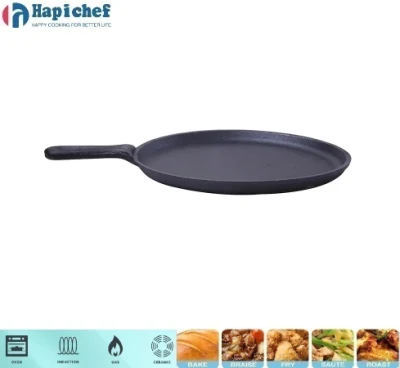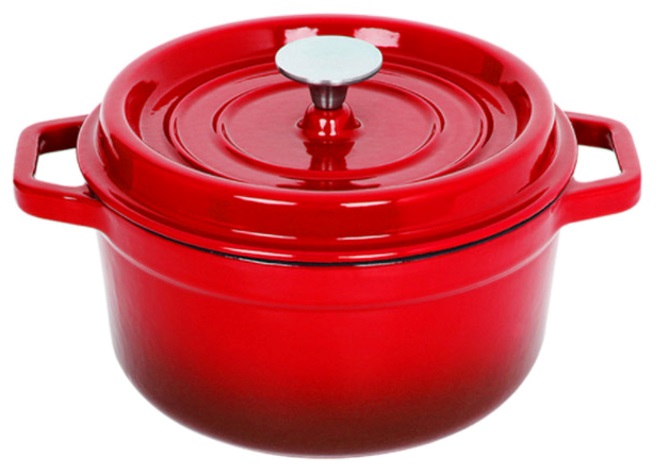Th1 . 20, 2025 12:21
Back to list
restoring cast iron griddle
Restoring a cast iron griddle is a task that not only brings a piece of historical cookware back to life but also enhances your culinary experience. If you've ever stumbled upon a rusted, forgotten cast iron griddle at a garage sale or inherited one from a family member, you know the potential these pieces hold. Their ability to withstand high heat and offer uniform cooking makes them invaluable in any kitchen. This guide dives into the step-by-step process, ensuring you execute the restoration with expertise, giving you a functional and beautiful griddle that promises to serve for generations.
Next, place the oiled griddle upside-down in a preheated oven at around 350-400°F (175-200°C). Lining the lower rack with foil can catch any drips. Let the griddle bake for at least an hour. This forms the protective, non-stick layer. After the time elapses, allow the griddle to cool in the oven to avoid any micro-cracks formed by rapid temperature changes. The final stage of restoration is maintaining the griddle’s seasoning. Each use reaffirms the layer, and proper cleaning thereafter is essential. Avoid soap after seasoning, as it can strip the pan of its protective layer. Instead, use hot water and a stiff brush to clean. If food sticks, add coarse salt to the surface with a little water as an abrasive. Dry thoroughly and lightly oil the surface before storing. Practical tips include always heating the griddle gradually to avoid warping, and using it often to keep the seasoning healthy and effective. The more frequently a cast iron griddle is used and cared for in this manner, the better it becomes at cooking evenly and maintaining its non-stick qualities. Restoration doesn’t just bring utility to a griddle; it connects us to a time-honored tradition of cooking. Regardless of how technology advances, cast iron cookware remains unparalleled for certain cooking techniques. Griddles, in particular, are perfect for achieving the sear on meats or the crispiness on pancakes that other cookware often fails to deliver. Ultimately, the time and care invested in restoring a cast iron griddle prove rewarding as it eventually becomes an irreplaceable staple in your kitchen. An item once deemed useless gains a newfound life and purpose where modern cookware often falls short. As you master the art of restoration and seasoning with practice, you not only enhance your cooking repertoire but also sustain a piece of culinary heritage.


Next, place the oiled griddle upside-down in a preheated oven at around 350-400°F (175-200°C). Lining the lower rack with foil can catch any drips. Let the griddle bake for at least an hour. This forms the protective, non-stick layer. After the time elapses, allow the griddle to cool in the oven to avoid any micro-cracks formed by rapid temperature changes. The final stage of restoration is maintaining the griddle’s seasoning. Each use reaffirms the layer, and proper cleaning thereafter is essential. Avoid soap after seasoning, as it can strip the pan of its protective layer. Instead, use hot water and a stiff brush to clean. If food sticks, add coarse salt to the surface with a little water as an abrasive. Dry thoroughly and lightly oil the surface before storing. Practical tips include always heating the griddle gradually to avoid warping, and using it often to keep the seasoning healthy and effective. The more frequently a cast iron griddle is used and cared for in this manner, the better it becomes at cooking evenly and maintaining its non-stick qualities. Restoration doesn’t just bring utility to a griddle; it connects us to a time-honored tradition of cooking. Regardless of how technology advances, cast iron cookware remains unparalleled for certain cooking techniques. Griddles, in particular, are perfect for achieving the sear on meats or the crispiness on pancakes that other cookware often fails to deliver. Ultimately, the time and care invested in restoring a cast iron griddle prove rewarding as it eventually becomes an irreplaceable staple in your kitchen. An item once deemed useless gains a newfound life and purpose where modern cookware often falls short. As you master the art of restoration and seasoning with practice, you not only enhance your cooking repertoire but also sustain a piece of culinary heritage.
Latest news
-
Revolutionary Cast Iron Griddles Redefine Outdoor CookingNewsMay.09,2025
-
The Ultimate Guide to Cast Iron BBQ GrillsNewsMay.09,2025
-
Revolutionize Your Kitchen with Premium Cast Iron Casserole CookwareNewsMay.09,2025
-
Premium Cast Iron Bakeware CollectionNewsMay.09,2025
-
Our Premium Cast Iron Skillets CollectionNewsMay.09,2025
-
Discover the Art of Cooking with Premium Cast Iron Dutch OvensNewsMay.09,2025
-
The Versatility of a Cast Iron CasseroleNewsApr.21,2025
